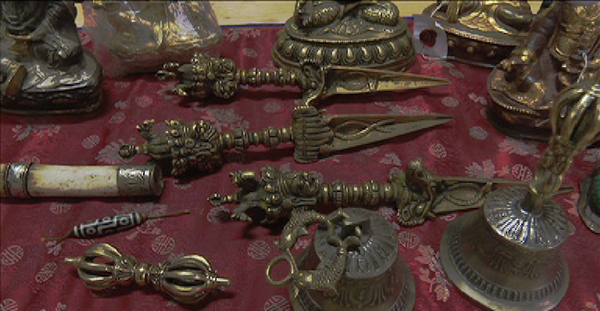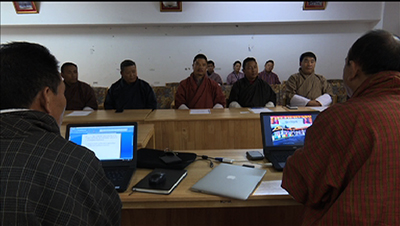 The Movable Cultural Property Act of Bhutan 2005 clearly states rules and procedures around the sale or export of non-valuable cultural properties or non-antiques.
The Movable Cultural Property Act of Bhutan 2005 clearly states rules and procedures around the sale or export of non-valuable cultural properties or non-antiques.
The transaction of non-valuable cultural properties is subject to approval from the Department of Culture.
The act also states rules around antiques or valuable cultural properties. Antiques usually are objects or items that are more than a hundred years old. The act doesn’t allow such objects to be sold or taken out of the country under any circumstances.
But not many are aware of these rules and restrictions, says the Department of Culture. Therefore, a meeting was held yesterday in Thimphu to acquaint the handicrafts businesses with the movable cultural property act.
 The eleven members of the Handicraft Association of Bhutan attended the meeting. They were briefed on the procedures involved in the sale of non-valuable cultural properties to the tourists.
The eleven members of the Handicraft Association of Bhutan attended the meeting. They were briefed on the procedures involved in the sale of non-valuable cultural properties to the tourists.
“We explained about the requirement of approval from the Department of Culture while selling the non-antique items,” Phendey Lekshey Wangchuk, the Chief Cultural Property Officer with the Department of Culture, said.
“Whether it’s the guides or a seller, they should obtain approval to make sure the items they bought can be taken out of the country.”
Phendey Lekshey Wangchuk said such a measure is critical to preserving antiques. “This is one method to protect our antiques from being taken out of the country.”
The non-valuable cultural properties or non-antique items, according to the act, include old Tensum, ritual objects and handicrafts among others.
As for antiques or valuable cultural properties, it includes objects used for religious offerings and worship.
The antiques also refer to movable objects, which are expressions and testimony of human creation, or are of the evolution of nature, which are of artistic, historical, cultural, religious, social, archaeological or technical value and interest as Kuten, Sungten and Thukten.
The Chief Cultural Property Officer added the antiques don’t necessarily have to be very old though. For instance, the belongings of late Geshey Gedun Rinchen, who was the 69th Je Khenpo of Bhutan, are considered as antiques.
The members of the Handicraft Association of Bhutan said yesterday’s meeting was an eye-opener.
”I understood about what kind of items can be sold and what cannot be sold,” Dorji Penjor, the owner of a handicraft shop in Paro, said.
“We are now clear about what kind of handicraft items require approval for sale. I will share these information with others in the business.”
”I found this consultative meeting important,” Pema Tshering, a Thimphu based Handicraft business owner, said.
“Most of the business people and also people in the tourism agencies are not aware of the procedures involved in the transaction of handicraft items.”
He added the tourists end up facing the brunt of this ignorance.
For instance, the customs officials at the Paro airport seized over 40 non-valuable cultural properties from travellers, mostly tourists, in the past few weeks.
The properties were being taken out of the country without proper approval from the culture department.
The department says the seized items are handed over to the rightful owners.
But if the items are antiques, the owners risk facing prosecution since the sale of antiques is prohibited by the Moveable Cultural Property Act of Bhutan 2005.
The Department of Culture plans to meet with travel agents and tour guides next to familiarize them on the issue.












